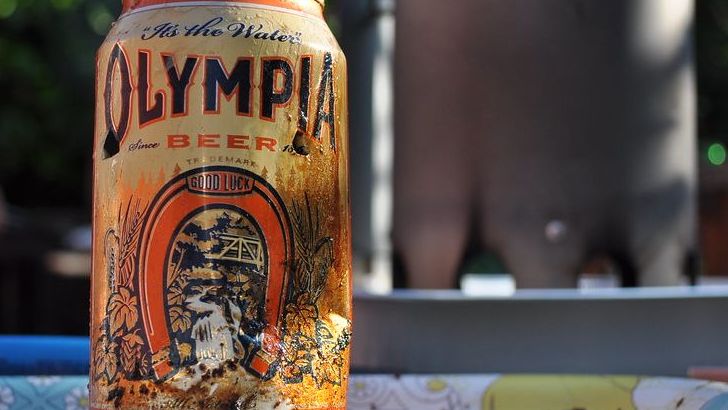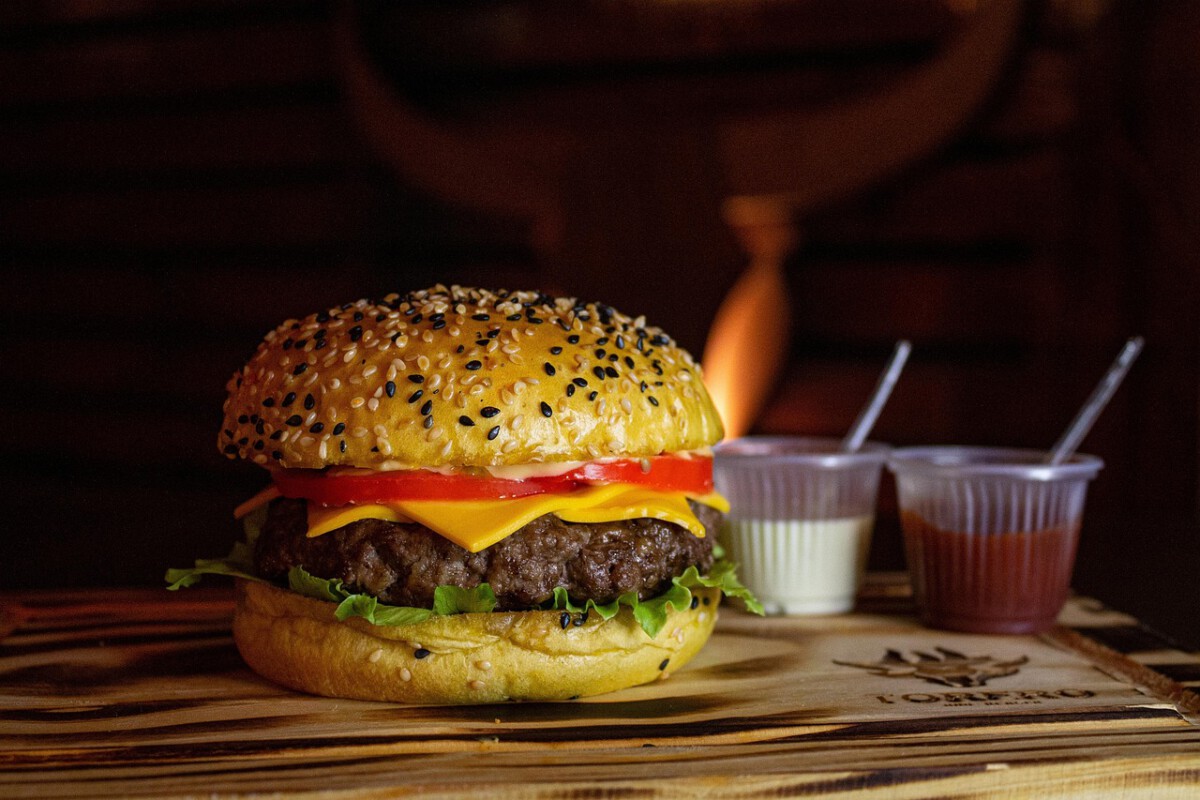Olympia Beer – The Pacific Northwest’s Lost Icon

In January 2021, Pabst Brewing decided to stop producing Olympia Beer altogether, citing “a growing decline in its demand” in an official statement on the brand’s Instagram page. This marked the end of a remarkable 125-year journey for what locals affectionately called “Oly.” Brewed since 1896 at a facility in Tumwater, Washington, not far from the state capital of Olympia, its signature selling point was that it was made from carefully treated, locally-sourced spring water, a fact referenced to the marketing slogan that appeared on every can of Olympia Beer: “It’s the water.”
The beer’s decline began long before its final discontinuation. In 2003, the much larger Pabst Brewing Company bought the Olympia Brewing Company and shifted production to a factory in California. Olympia’s lager continued to occupy store shelves on the West Coast for the next 18 years, sold to a consistently shrinking customer base. The loss of its original Tumwater brewing location meant the beer no longer benefited from the pristine artesian well water that had made it special for over a century. Despite a loyal following and even celebrity endorsements from movie star Clint Eastwood, who featured the brand in many of his films, Olympia couldn’t survive the changing beer landscape of the 21st century.
Meister Brau – Chicago’s Forgotten Brewing Giant

When business slowed, the Miller Brewing Company bought the struggling brewery in 1972 and subsequently phased out the Meister Bräu line. The last cans were produced in 2005. This Chicago institution had deeper roots than most people realized, stretching back to the late 1800s when German immigrant Peter Hand founded what would become one of the Midwest’s most successful regional breweries.
The Miller Brewing Company acquired Meister Bräu from the Peter Hand Brewery, which was founded in 1891 by Prussian immigrant Peter Hand. The brewery was purchased by investors in 1967 and renamed Meister Bräu, Inc. after its flagship beer. The company’s real claim to fame came through innovation: In the late 1960s, Meister Bräu introduced one of the first low-calorie beers, Meister Bräu Lite, which was originally formulated by biochemist Joseph L. Owades and first sold as “Gablinger’s Diet Beer” in 1967. After Miller’s acquisition of the company, they used the Meister Bräu Lite recipe as the basis for Miller Lite, which became a highly successful product for the company. Though the original Meister Brau disappeared, its light beer legacy lives on in one of America’s most popular beer brands today.
Pete’s Wicked Ale – The Craft Beer Pioneer That Couldn’t Adapt

Sadly, though, Pete’s Wicked Ale wasn’t destined to last. In the 1990s, Texas-based The Gambrinus Company bought Pete’s Brewing Company and changed the recipe of Pete’s Wicked Ale. In 2011, it was discontinued. This marked the end of one of craft brewing’s most influential early success stories, a beer that helped launch America’s craft beer revolution in the 1980s.
Back in the late 1970s, enthusiastic American homebrewer Pete Slosberg was a big fan of that hoppy, nutty, full-bodied drink, and in an attempt to replicate it for U.S. beer-drinkers, he created his own version, which he called Pete’s Wicked Ale. Pete’s Wicked Ale, produced by Pete’s Brewing Company, hit the market in the 1980s and was a major success. Americans appeared to revel in the new style of beer, because in the decades before, most beer on the market had been mass-produced lager. In fact, Pete’s Wicked Ale was part of a movement dubbed the American Craft Beer Revolution. At one point, it was among the biggest names in the craft beer industry, alongside Boston Beer Company. The brand’s downfall came when corporate ownership changed its beloved recipe, alienating the loyal customers who had made it famous. Plenty of beer fans remember taking their first sip of Pete’s Wicked Ale and immediately developing an interest and passion for new and exciting craft beer blends.
Bud Dry – Budweiser’s Forgotten Experiment

Bud Dry was discontinued by Anheuser-Busch in December 2010, ending a 20-year run that began with high hopes during the dry beer craze of the early 1990s. Bud Dry was a beer brewed by Anheuser-Busch in the United States and was a member of the Budweiser family of beers. It was introduced nationally in the U.S. in April 1990 with the slogan of “Why ask why? Try Bud Dry.” It was originally successful in test markets and was expected to be a popular beer with the rise in Light Lager popularity.
According to Anheuser-Busch (via the New York Times), Bud Dry sold 3.2 million barrels in its first year and had a $70 million marketing budget, much of which went toward creating commercials for the “Why ask why” campaign that appealed to a wider audience. However, the beer faced stiff competition from the dry beer trend it was trying to capitalize on. But with the introduction of Bud Ice in 1994, Anheuser-Busch slowed its marketing efforts for Bud Dry as its popularity waned, eventually discontinuing the dry beer entirely. The shift in consumer preferences and the company’s focus on Bud Ice essentially sealed Bud Dry’s fate, making it a footnote in Budweiser’s long history of brand experiments.






